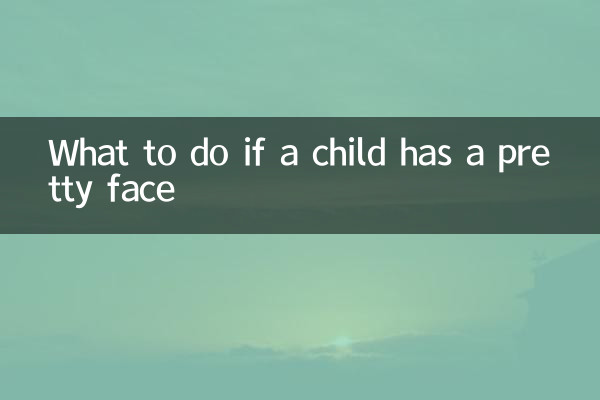What to do if a child has a pretty face
With the arrival of spring, many parents find that their children's faces are prone to dryness, redness and even allergies. This article will combine the hot topics and hot content on the Internet in the past 10 days to provide parents with scientific and practical solutions, and attach structured data for reference.
1. Common problems on children’s faces in spring

According to recent discussion data on parenting topics, the following are statistics of high-frequency keywords for children’s facial problems in spring:
| Question type | Mention frequency | Main symptoms |
|---|---|---|
| Dry and peeling | 42% | Flaking and tightness |
| seasonal allergies | 35% | rash, itching |
| UV damage | 15% | redness, burning sensation |
| Other questions | 8% | Including mosquito bites, etc. |
2. Solutions and nursing suggestions
1.Basic nursing trilogy
According to the recommendations of pediatricians, children’s facial care in spring should follow the following steps: gentle cleansing → moisturizing → sun protection and isolation. Make sure to choose alcohol-free, fragrance-free products for infants and young children.
2.Comparison of popular care products
The following are the top five children’s spring care products that have recently been sold on e-commerce platforms:
| Product name | Main ingredients | Applicable age | Positive rating |
|---|---|---|---|
| A brand baby moisturizer | oat extract | 0-3 years old | 98% |
| B brand soothing cream | Ceramide | 3 years and above | 96% |
| C brand physical sunscreen | zinc oxide | More than 6 months | 94% |
| D brand moisturizing spray | hot spring water | All ages | 92% |
| E brand repair cream | Squalane | 1 year old and above | 95% |
3. Diet plan
Nutrition experts recommend increasing the intake of the following nutrients in spring to help improve skin condition:
| Nutrients | function | food source | recommended daily amount |
|---|---|---|---|
| Vitamin A | Repair skin barrier | carrots, spinach | 300-400μg |
| Vitamin E | Antioxidant | Nuts, vegetable oils | 5-7mg |
| Omega-3 | Anti-inflammatory and moisturizing | Deep sea fish, flaxseed | 500-1000mg |
| Zinc element | Promote healing | Lean meat, oysters | 3-5mg |
4. Handling special situations
1.Allergy emergency treatment
If obvious allergic symptoms occur, it is recommended to: stop using the suspected product immediately → apply wet compress with cold water → seek medical advice promptly. Recent hot searches show that children with pollen allergies have increased by 20% compared with the same period last year, so special attention is needed.
2.Medical judgment criteria
You should seek medical treatment promptly if the following conditions occur: no improvement for 3 days, edema or exudation, accompanied by fever and other symptoms. Recent hospital outpatient data show that the number of children’s dermatology visits in spring accounts for 35% of the total outpatient visits.
5. Preventive measures and life suggestions
1.environmental regulation
Keep the indoor humidity at 50%-60% and avoid direct air conditioning. Recent meteorological data shows that the air humidity in northern areas is generally below 30% in spring, so it is recommended to use a humidifier.
2.Protection when going out
Try to avoid going out between 10 a.m. and 2 p.m. when ultraviolet rays are strong. If you need to go out, you should wear physical sun protection (hat, mask, etc.) and sunscreen protection.
3.Clothing selection
Choose pure cotton clothing and avoid allergenic materials such as wool. Recent consumer reports show that pure cotton clothing can reduce the risk of skin irritation by 30%.
Through the above comprehensive care plan, you can help your child get through the sensitive spring. If symptoms persist or worsen, be sure to consult a professional doctor promptly.

check the details

check the details